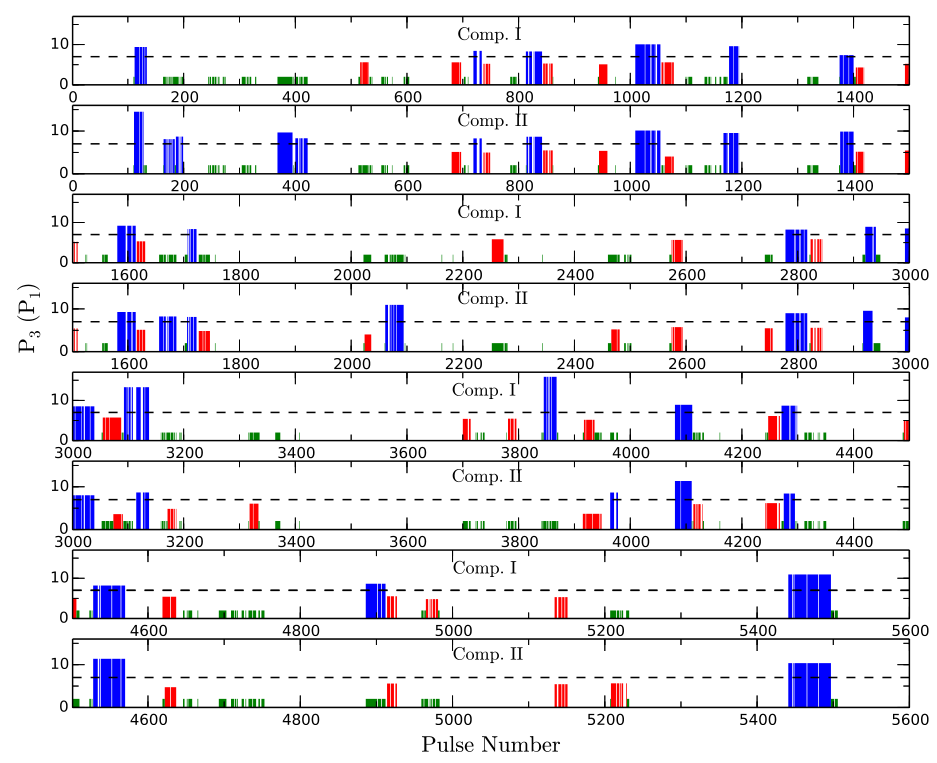Using the archived observational data at 1369 MHz with the Parkes 64-m radio telescope, Rukiye Rejep, a PhD student from the Pulsar Group at the Xinjiang Astronomical Observatory (XAO) of the Chinese Academy of Sciences, and her co-researchers have performed a detailed study of nulling and sub-pulse drifting properties of PSR J1727-2739.
Pulse nulling is a kind of emission change where pulsed emission suddenly turns off for several pulse periods and then just as suddenly turns on.
Although most of these emission changes are largely considered to be random processes, some changes are reported to show periodicities. Sub-pulse drifting is the best-known periodic emission variation in which sub-pulses drift in pulse phase or longitude across a sequence of single pulses.
Pulsars exhibiting nulling along with drift mode changing, such as PSR J1727-2739, give a unique opportunity to investigate the physical mechanism of these phenomena.
In this study, the researchers derived a nulling fraction of 66 per cent ± 1.4 per cent for this pulsar. The burst and null lengths distributions of PSR J1727-2739 are found to cluster between two and five pulse periods.
In addition, the researchers observed two distinct drift modes for this pulsar. They also found that the previously known drifting sub-pulses in the leading component, this pulsar also shows drifting sub-pulses in the trailing component (Figure 1).
The two profile components share the same drift periodicity P3 in a given drift mode, but the horizontal drift periodicity P2 are quite different. The drift rate of the trailing component is somewhat higher than that of the leading component in both drift modes. This study was published on line on 23 November 2021 in MNRAS.
Moreover, the researchers argue that: "More comprehensive studies based on more sensitive, longer and multi-frequency observations for this kind pulsars would certainly provide intriguing details to understand the true nature and origin of these phenomena."
